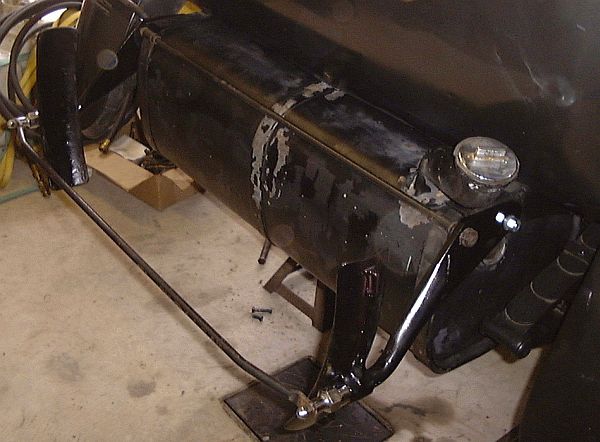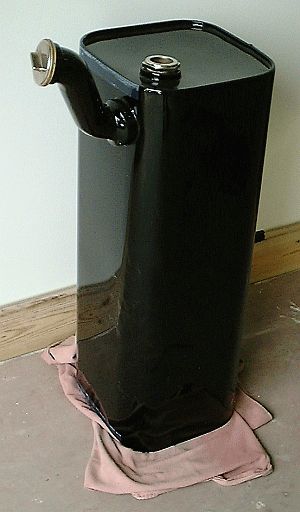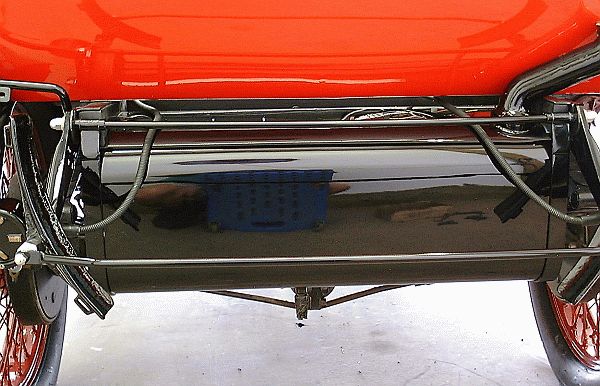|
The final tank to be
replaced was the kerosene tank at the rear of the car. This tank experiences
thermal changes with the operation of the car.
The car’s original kerosene tank was badly rusted all along the bottom and had been repaired numerous times with fuel tank repair epoxy. Unfortunately the tank still wept fuel. While at the opposite end of the car from the enclosed flames under the hood, the leaking would need to be corrected. Inspection of the interior of the tank with a borescope revealed a complete coating of rust to the point that replacement of the tank was the only viable solution. As this tank would be painted, the new tank was fabricated out of stainless steel.
|

 Fuel from the tank is pumped to
the main burner’s kerosene service tanks where 140 PSIG pressure is maintained. As the pumps are operating anytime the car is in motion any excess kerosene is
directed back to the supply tank. As the fuel lines are near steam lines and
other hot portions of the vehicle the fuel absorbs some amount of heat as it
circulates. The heated fuel returning to the tank warms the kerosene tank and
its contents. When the car is stopped and allowed to cool the kerosene tank
cools and in so doing “inhales” air from the environment. This inhaled air
contains moisture which condenses and collects at the bottom of the tank where
rusting starts.
Fuel from the tank is pumped to
the main burner’s kerosene service tanks where 140 PSIG pressure is maintained. As the pumps are operating anytime the car is in motion any excess kerosene is
directed back to the supply tank. As the fuel lines are near steam lines and
other hot portions of the vehicle the fuel absorbs some amount of heat as it
circulates. The heated fuel returning to the tank warms the kerosene tank and
its contents. When the car is stopped and allowed to cool the kerosene tank
cools and in so doing “inhales” air from the environment. This inhaled air
contains moisture which condenses and collects at the bottom of the tank where
rusting starts.